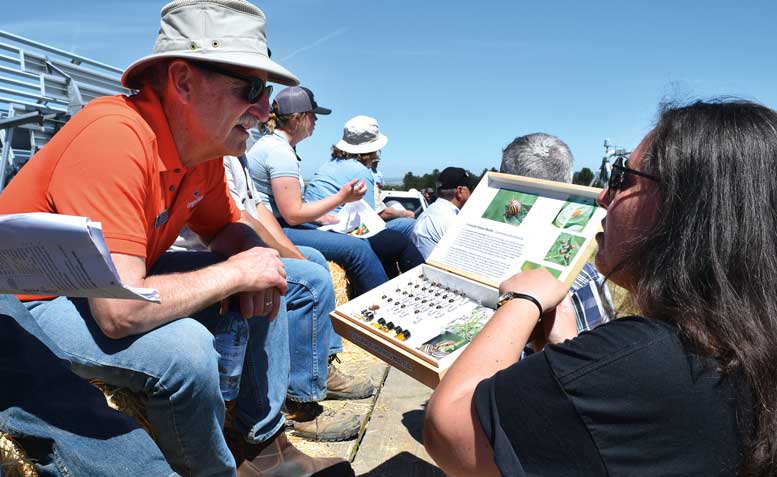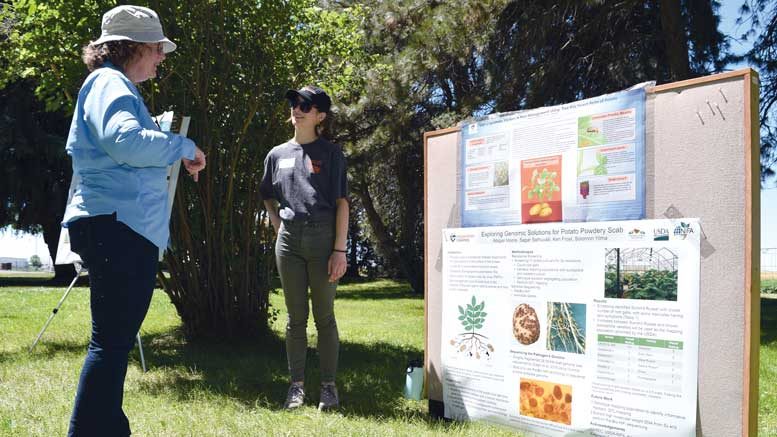|
Click to listen to this article
|
Story and photos by Denise Keller, Editor
From pathogens and pests to potato breeding and bruising, the Oregon State University (OSU) Potato Field Day, held June 22 in Hermiston, Oregon, covered a variety of topics as researchers explained their latest trials and shared observations about trends affecting the Columbia Basin potato crop this season.

Colorado Potato Beetle Control
OSU entomologist Silvia Rondon grabbed growers’ attention with a warning about the increasing populations of Colorado potato beetles in the Columbia Basin.
“The problem is really expanding. One of the main reasons why the problem is expanding geographically in the Columbia Basin is because, in some instances, we may be facing the beginning of the development of pesticide resistance,” Rondon said.
Rondon made it clear that while she is seeing an increasing trend of resistance in the Columbia Basin, Colorado potato beetle populations in the Pacific Northwest are still susceptible to most labeled products. The region is not at the point that has been reached in the eastern part of the U.S. where the beetles have very strong resistance to insecticides with nearly all modes of action.
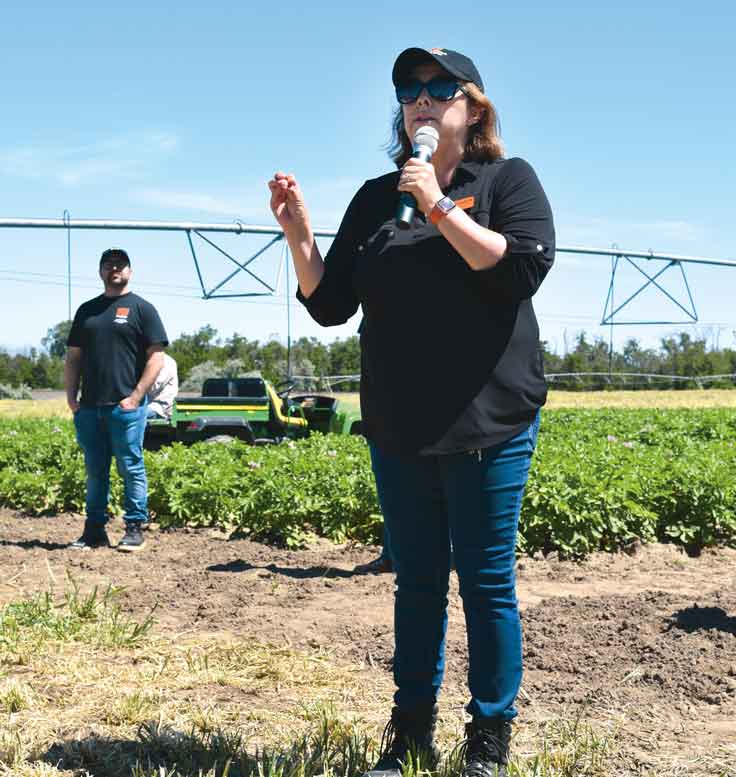
With that, Rondon reviewed management recommendations, reminding growers that carefully rotating insecticidal modes of action is critical to slow the development of resistance. In addition, planting potatoes far from the previous year’s crop where Colorado potato beetles overwinter can make it more difficult for beetles to find a new potato field. And adding chopped straw before plant emergence can reduce infestations since mulching provides a habitat for natural enemies.
OSU researchers are conducting several studies to help growers better manage Colorado potato beetles. Projects include evaluating potato varieties potentially resistant to the pest and testing the efficacy of new chemical products, biological products and “old” chemistry.
“We’re trying to come up with new tools that will allow us to put more of those tools in your toolbox so you are going to be ready to control this important pest,” Rondon said.

Blackspot Bruise Susceptibility
Aymeric Goyer, a plant biologist with OSU, reported on results of a research project looking at blackspot bruise susceptibility. The two-year project, conducted in collaboration with the University of Idaho and Miller Research, evaluated the effect of vine maturity and nitrogen application rates on blackspot susceptibility.
“What motivated this project is we still do not fully understand the factors that contribute to blackspot, and it has led to reoccurring issues with blackspot with a lot of unpredictability and fluctuation from year to year and from field to field and sometimes day to day during the harvest season,” Goyer explained. “We thought it was important to understand whether there were management practices that could be used to decrease blackspot susceptibility.”
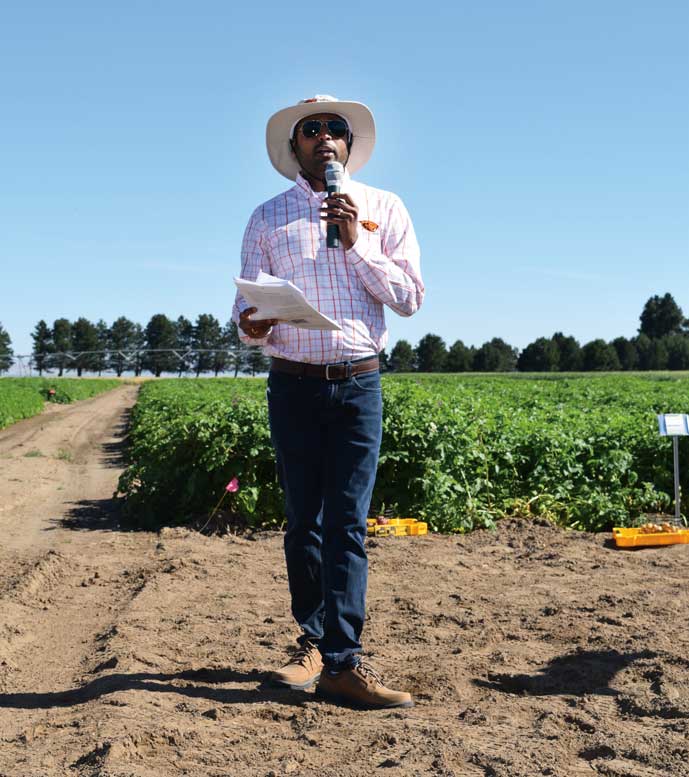
Studies in the 1990s showed that vine maturity at the time of vine kill or harvest is one factor related to bruise susceptibility. Specifically, the more mature vines were, the more susceptible potatoes were to bruising. With most of that research done on Russet Burbank, there was a lack of data on newer varieties, Goyer said. In addition to more varieties, the research team also looked at nitrogen management since one way to delay vine maturity – and, in turn, possibly reduce blackspot bruise susceptibility – is to increase seasonal nitrogen applications.
Plots of Russet Burbank, Ranger Russet, Clearwater Russet and Umatilla Russet were grown in Oregon and Idaho. Trial treatments included different vine maturity levels and various nitrogen application rates. Tubers were harvested, put through an impact test and analyzed.
In the end, there was some correlation between vine maturity and blackspot severity; however, it was not consistent between varieties and between years, making vine senescence level not a good indicator of bruise susceptibility. The researchers also found no effect of nitrogen rate on bruise susceptibility.
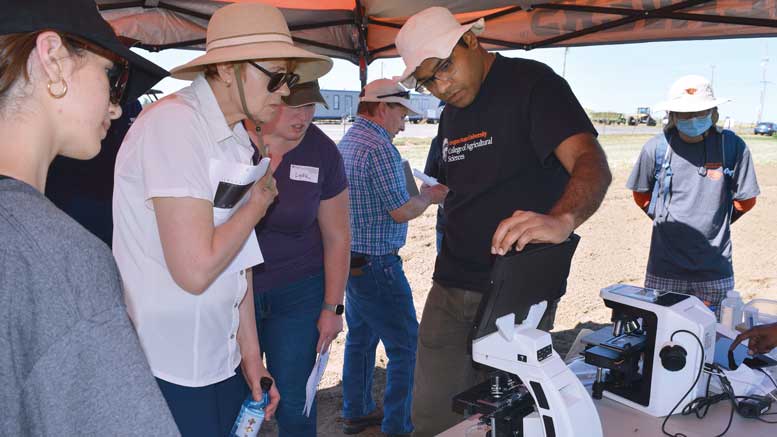
Nutrient Management Practices
Postdoctoral scholar Shahram Torabian detailed three of OSU’s latest trials on nutrient management practices for potatoes in the Columbia Basin.
A field trial in Boardman, Oregon, evaluated rates, sources and application methods of potassium for Clearwater Russet, Umatilla Russet and Russet Burbank. In the past, the agronomy team completed a project focusing on potassium requirements for six main varieties in the region. They found that potassium applications increased the yield of ≥6-ounce tubers at a rate of 200-400 lbs. per acre in Quincy loamy fine sand with the available potassium level ranging from 92 to 170 ppm. However, potassium applications did not impact total yield and marketable yield. Potassium applications tended to decrease specific gravity and improve fry color, especially when the rate was up to 400 lbs. per acre. Potato yields and quality were significantly affected by year and cultivar and their interactions.
Two other field trials are ongoing. One aims to optimize the nitrogen application rate and timing for Alturas Russet. The other is designed to improve nitrogen use efficiency with controlled-release nitrogen fertilizers.
